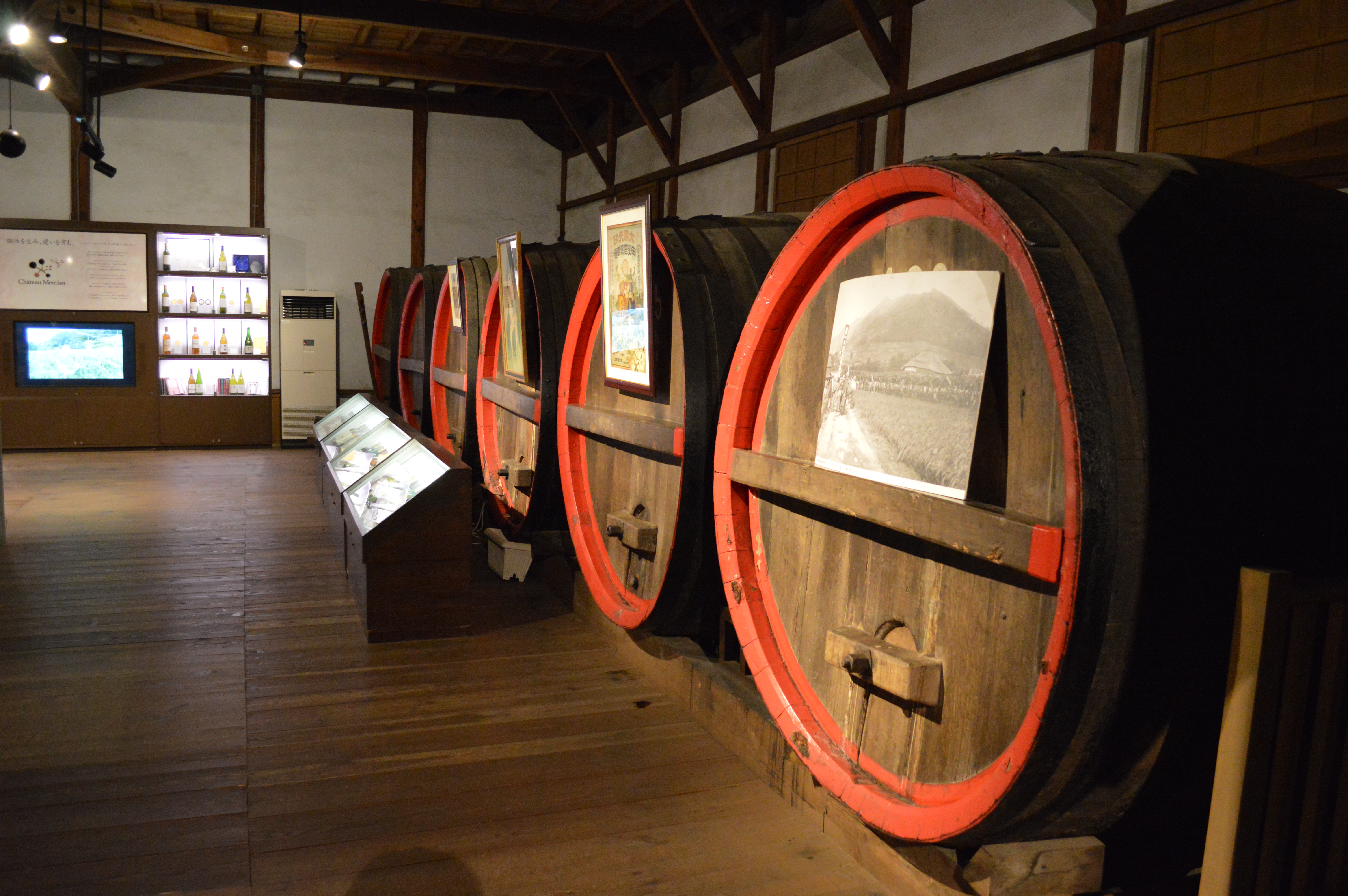Listen to this page:
Please listen to this Japan Winecast on the history of Yamanashi’s wine.

As I passed through the gate and entered the elegant Japanese garden at Miyakoen, I was struck by the excellent condition of the building itself. The main building at Miyakoen was built in 1896, while the second floor was added in 1928. However, there is a Kura (storage building) at the back of the property which dates back to late Edo (1603-1868). Take a close look inside the storage building to see various pieces of equipment from the winery’s past.

The facility was developed by Kotaro Miyazaki (1863-1947). After Japan’s first winery (Dai-Nihon Yamanashi Winery) dissolved in 1886, Kotaro Miyazaki inherited the company’s winemaking equipment and began operations with Ryuken Tsuchiya (1858-1940). Tsuchiya, along with Masanari Takano (1852-1923), had studied grape cultivation and winemaking in Troyes, the Champagne region of Northern France, in the late 1870s.

Ryuken Tsuchiya and Masanari Takano left Japan on October 10th, 1877, and arrived in Paris via Hong Kong, Singapore, Sri Lanka, Aden, Suez, Port Said, Naples, and Marseille on November 25th of the same year. I can hardly believe that two winemaking novices, speaking not a word of French between them, would embark on such a journey just 9 years after Japan opened to the outside world. It must have been quite an adventure for the two young men from Katsunuma. I only wish that I could have been there to document such a story. Unfortunately, despite their best efforts to learn the art of winemaking, Japan’s first winery, the winery they helped establish, survived less than 10 years.

Over the past 140 years, the winery has had at least 5 different names, with the latest being Château Mercian, a subsidiary of Kirin Holdings Company, Ltd.

This is a wine container with one of the previous names of the winery, Daikoku Budoshu (Daikoku Winery), established in 1888. The container can be seen in the museum on the second floor of Miyakoen. Daikokuten, the god of wealth and commerce, was adopted as the winery’s trademark by Kotaro Miyazaki.


Once you have finished visiting Miyakoen, walk across the street to enter Château Mercian’s tasting room and museum. Although both facilities are deeply connected to Japan’s oldest winery, Miyakoen is operated by the local government, while Château Mercian is privately run by Kirin Holdings Company Ltd.



Here are a few pictures of the antique equipment on display at the Château Mercian museum.
If you are planning a day trip to enjoy Japan’s premier winemaking region, then consider starting your day at Miyakoen and Château Mercian. The entrance fee for Miyakoen is ¥200 for adults (¥100 for students and children). Miyakoen is open from 9:00 to 16:30, but it is closed on Tuesdays and from December 28th to January 4th.
The standard 60-minute tour of the winery, with limited tasting, can be booked for 10:30 on any day except Tuesdays (also at 13:00 on weekends and national holidays). The standard tours can be booked for a maximum of 10 people at the cost of ¥1,000 per person. The premium 90-minute tour of the winery, with in-depth tasting, can be booked for 13:00 on any weekday except Tuesdays (14:00 on weekends and national holidays). The premium tours can be booked for a maximum of 8 people at the cost of ¥3,000 per person. It still might be possible to join tours without a prior reservation, but it would be best to reserve beforehand.
Click here to learn more about tour reservations.
Visit my detailed blog post describing local transport and accommodations.
Begin your adventures off the beaten path by booking a night in my Airbnb property.
Copyright © David Ellis | All Rights Reserved
